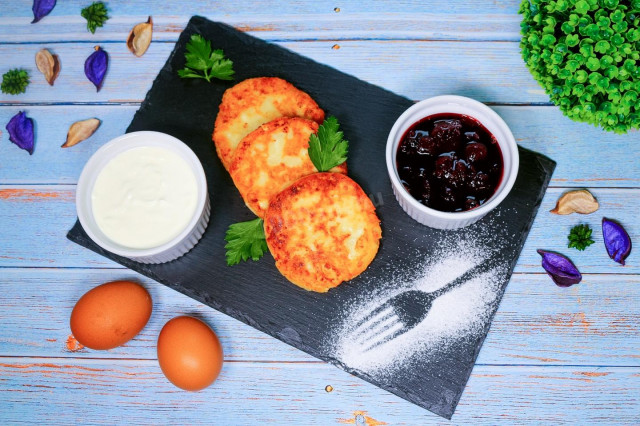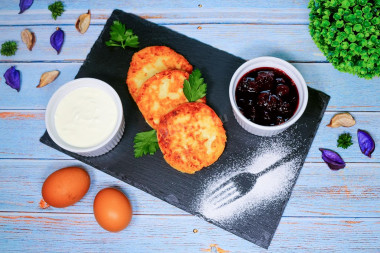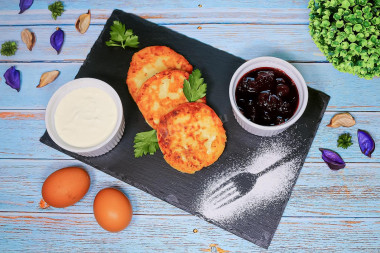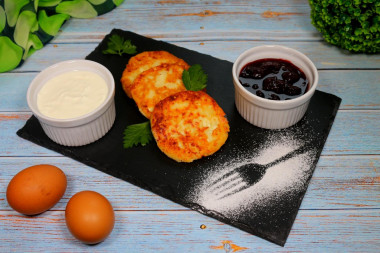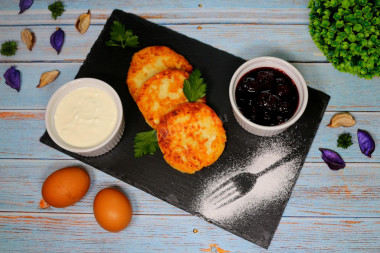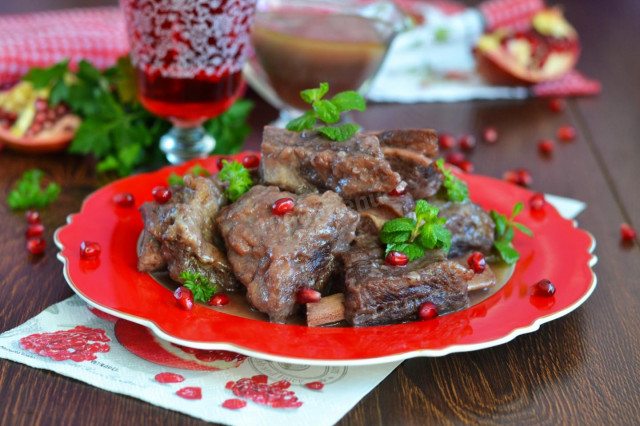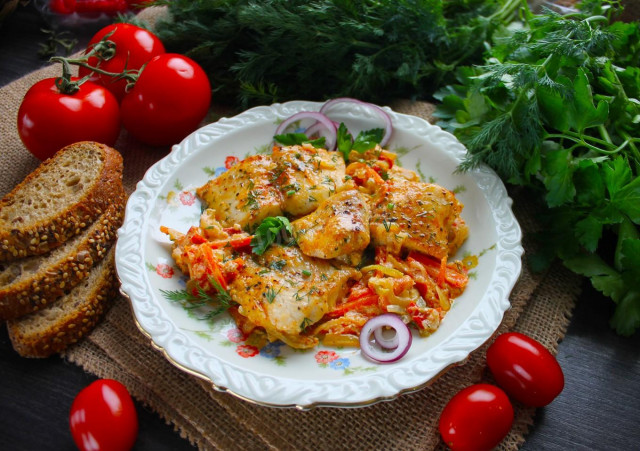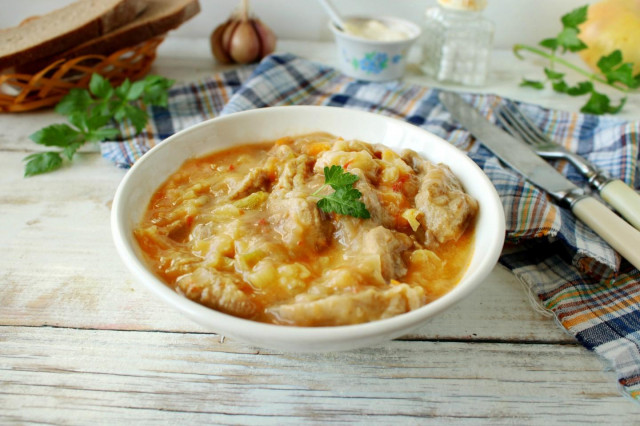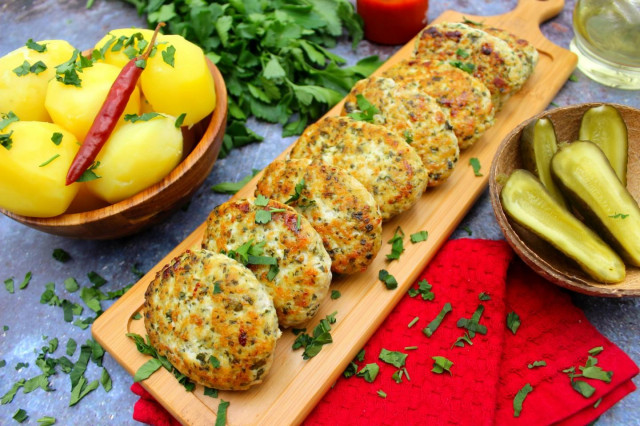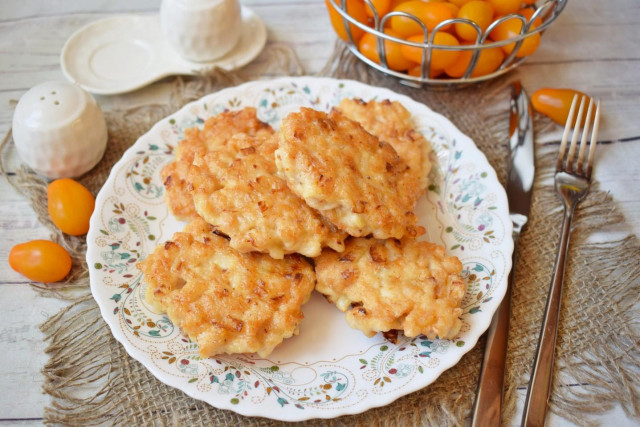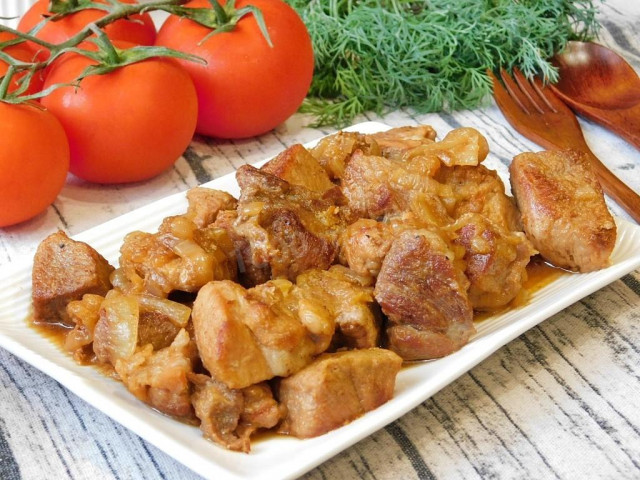Composition / ingredients
Step-by-step cooking
Step 1:
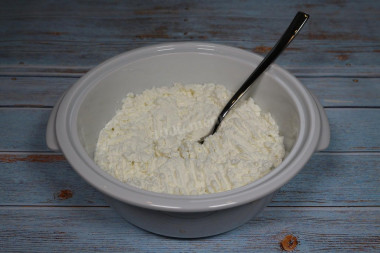
How to make cheesecakes in flour in a frying pan? We will prepare all the necessary ingredients. Cottage cheese is better to take fatter and moist, but not too much. In any case, do not use dry cottage cheese, because cheesecakes will turn out to be harsh. Put the cottage cheese in a bowl or any other deep container. We'll mash it with a fork.
Step 2:
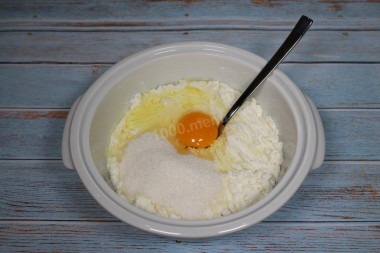
Now add granulated sugar to the cottage cheese and beat one chicken egg. Mix all the ingredients thoroughly.
Step 3:
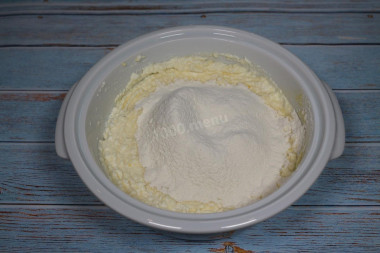
Then add 4 tablespoons of wheat flour sifted through a sieve to the curd mixture. Mix everything well. The resulting curd mass should gather in a lump and keep its shape. If the mass turns out a little bit of a slightly different consistency, then just add a little more flour.
Step 4:
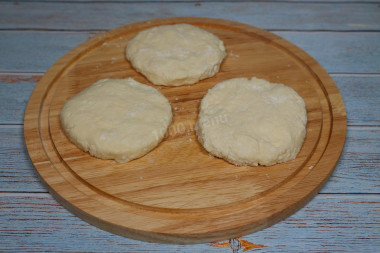
We begin to make cheesecakes. To do this, moisten your hands with cold water, then take a tablespoon or a little more of the curd mass, roll it into a ball. Now, with the help of the palm, we flatten the ball and form a rounded cheesecake as in the photo. In a separate container, we put a couple of spoons of flour and dip the cheesecake in it from both sides, after which we spread it on a board or any other work surface. We do this procedure with the remaining curd mixture.
Step 5:
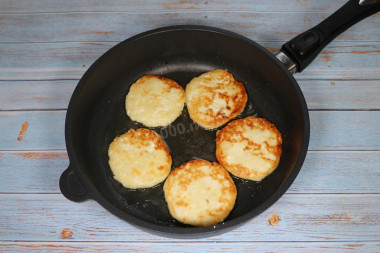
We put the prepared cheesecakes on a preheated frying pan, greased with vegetable oil. Fry the cheesecakes over medium heat until a golden crust forms on both sides.
There is another option for forming cheesecakes. I even like it more (presented in the recipe was an experiment, also good, but maybe just not familiar). To do this, we take the resulting curd mass and divide it approximately in half (this is done for the convenience of working with the curd mass). We take the first part and roll the "sausage", not thin, but not thick. Next, using a sharp knife, we cut it into pieces of the desired size and from these pieces we finally form round-shaped cheesecakes. With the second part, we do the same procedure.
Be prepared for the fact that flour may need more or less than indicated in the recipe. Focus not on the amount of flour, but on the desired consistency of the dough. To avoid mistakes, read about flour and its properties!
It is important to sift flour to saturate it with oxygen. Then the baking will turn out to be airy and will rise well when baking.
Caloric content of the products possible in the composition of the dish
- Cottage cheese of 40% fat content - 466 kcal/100g
- Cottage cheese of 20% fat content - 233 kcal/100g
- Cottage cheese of 18% fat content - 226 kcal/100g
- Cottage cheese of 10% fat content - 156 kcal/100g
- Low-fat cottage cheese - 75 kcal/100g
- Cottage cheese with sour cream - 260 kcal/100g
- Fruit cottage cheese - 147 kcal/100g
- Soft dietary cottage cheese - 170 kcal/100g
- Vitalinia cottage cheese - 64 kcal/100g
- Cottage cheese "morning" ( "danone") without sugar - 91 kcal/100g
- Cottage cheese - 156 kcal/100g
- Whole durum wheat flour fortified - 333 kcal/100g
- Whole durum wheat flour universal - 364 kcal/100g
- Flour krupchatka - 348 kcal/100g
- Flour - 325 kcal/100g
- Granulated sugar - 398 kcal/100g
- Sugar - 398 kcal/100g
- Vegetable oil - 873 kcal/100g
- Chicken egg - 80 kcal/100g

